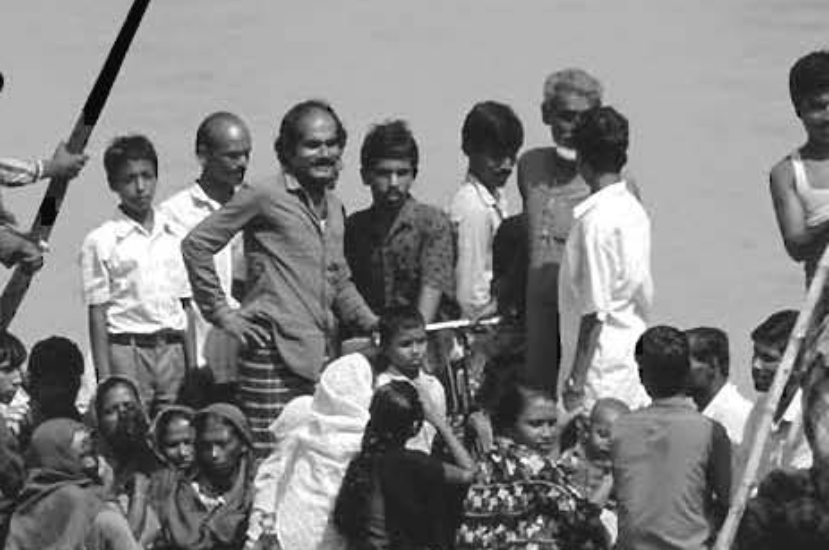A. Look at the picture and answer these questions.
1. Where can you find this kind of boat?
2. Why does the boatman carry passengers across a river?
3. Why do people use country boats?
B. Read the text and answer the following questions.
“Is there anybody here who has ever crossed a river by a country boat?”
“I have, teacher,” said Jamil. “And I clearly remember what happened in that journey.”
“Would you please tell us what happened?” the teacher asked.
“Okay, teacher. It happened when I was in class 6. On a weekly bazar day, people were coming back with their shopping bags and baskets in hands, on shoulders and heads. They had to cross the river. It was not a big river. There was a ferry boat plying on the river. The boat could cross it in 8-10 minutes. It was just after sunset. The weather was getting bad. The wind started blowing from the north-west Black clouds were moving fast in the sky.
Everybody was trying to get into the boat. ‘No more, no more, please wait,’ shouted the boatman. But nobody listened to him.”
“What happened then, Jamil?” asked Rumi.
“With too many people on board, the boat sank in the middle of the river,” replied Jamil.
“Oh no! What happened then?” asked the teacher. “Thank God. There were no casualties. All the passengers swam to the other side. But some of them lost the stuff they were carrying such as oil, salt and milk,” said Jamil.
“Were you on the boat?” asked the teacher. “No, teacher. Seeing the boat overcrowded, I waited for the next trip,” replied Jamil.
“You did the right thing, Jamil.”
Questions
Tick the best answer.
1. A ferry boat was plying on the river. Here ‘plying’ means
a. playing with other boats,
b. sinking in the river,
c. travelling along a route,
d. waiting for passengers.
2. Why was everybody trying to get into the boat? Because
a. it was a weekly bazar day.
b. after sunset no ferry would ply on the river,
c. everybody had shopping bags with them,
d. it was going to be a dark and stormy evening.
3. The boatman requested the people to wait, because
a. his boat was very small.
b. the boat had already too many people.
c. there were other boats they could take.
d. he would not ferry people with bags and baskets.
4. “With too many people on board, the boat sank …” Here the phrase ‘on board’ means
a. on the boat,
b. on the wooden board,
c. outside the boat,
d. on the notice board.
5. There were no casualties. The statement tells us that
a. nobody died.
b. nobody was rescued.
c. nobody accepted their fate.
d. nobody lost anything.
6. The boat was overcrowded. Here ‘overcrowded’ means
a. people were quarreling on the boat,
b. the boat was unable to carry any more people,
c. the boatman did not like a crowd,
d. people were sitting on the boat’s bamboo hood.
C. Discuss in groups and write answers to these questions.
1. Why did some people have little or no patience when the ferry boat was in danger of sinking?
2. ‘No more, No more, please wait’ who said this? Explain in 2/3 sentences.
3. Answer the questions below:
a. If we have too many buyers of fish in the market, what is likely to happen?
b. If we have too many passengers at a bus or train station, what may happen?
If you want to read the next lesson of this unit please click the link below:




Leave a comment